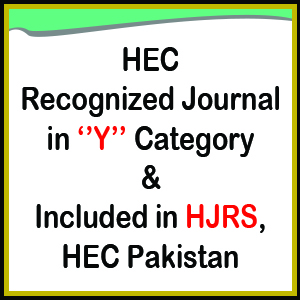Achieving Bilateral, Regional and Global Peace and Sustainability Through Common Grounds
DOI:
https://doi.org/10.47067/reads.v6i3.249Keywords:
Kartarpur Corridor, Spatial, Social, Spiritual, Economics and Strategic Tourism DynamicsAbstract
The opening of Kartarpur Corridor brings forward common ground between the two countries for bilateral, regional and global peace and sustainability. The gains of one are considered losses to the other with incidents like, lock down in Indian Kashmir, Indian Citizenship Law, atrocities along the Line of Control (LOC), Pulwama incident, and surgical strike. We propose that peace and sustainability process between the two countries with its roots in Kartarpur corridor as a common ground may help in developing future global directions. Spatial, social, spiritual, economics and strategic (SSSES) tourism dynamics of Kartarpur Corridor is our active area of focus in this study. Expanding common grounds is a formula for regional and global peace. The data from (384 Pakistanis and 384 non-Pakistani Sikh yatrees) is collected. The analysis and the results support the hypotheses of the study and the recommendations help working in line for development of tourism for SSSES.
References
Asmussen, C. G., Nielsen, B. B., Weatherall, C. D., & Lyngemark, D. H. (2019). Foreign ownership and global city characteristics: unpacking the connectivity of micro-locations. Regional Studies, 1-14.
Bellman, S., Forster, N., Still, L., & Cooper, C. L. (2003). Gender differences in the use of social support as a moderator of occupational stress. Stress and Health: Journal of the International Society for the investigation of Stress, 19(1), 45-58.
Blinkenberg, L. (1998). India-Pakistan: the history of unsolved conflicts. The historical part (Vol. 1). Odense University Press.
Chin, W. W. (1998). Commentary: Issues and opinion on structural equation modeling.
Cohen-Tannoudji, C., Dupont-Roc, J., & Grynberg, G. (1998). Atom-photon interactions: basic processes and applications. Atom-Photon Interactions: Basic Processes and Applications, by Claude Cohen-Tannoudji, Jacques Dupont-Roc, Gilbert Grynberg, pp. 678. ISBN 0-471-29336-9. Wiley-VCH, March 1998., 678.
Dányi, E., & Spencer, M. (2019). Un/common grounds: Tracing politics across worlds. Social Studies of Science.
Hagg, G., & Kagwanja, P. (2007). Identity and peace: reconfiguring conflict resolution in Africa. African Journal on Conflict Resolution, 7(2), 09-36.
Hu, L. T., & Bentler, P. M. (1999). Cutoff criteria for fit indexes in covariance structure analysis: Conventional criteria versus new alternatives. Structural equation modeling: a multidisciplinary journal, 6(1), 1-55.
Kamboh, A. Z., Kamal, Y., Nisar, Q. A., & Kamboh, M. A. (2018). Kartarpur Corridor: A New Role for Political Marketing. Journal of Indian Studies, 4(2), 233-238.
Kathuria, S., & Mathur, P. (2019). How Can South Asia Turn Its Proximity from a Burden to an Advantage?
Khan, M. M., Lodhi, S. A., & Makki, M. A. M. (2011). Cog-synergy: A model for high performance teams. International Journal of Academic Research, 3(5).
Lopez, L., González, R. C. L., & Fernández, B. M. C. (2017). Spiritual tourism on the way of Saint James the current situation. Tourism Management Perspectives, 24, 225-234.
Mamoon, D., & Murshed, S. M. (2017). When Education Explains Strong Institutions: Trade Policy also Matters. Social Indicators Research, 131(3), 1179-1210.
Perkins, R., & Khoo-Lattimore, C. (2019). Friend or foe: Challenges to collaboration success at different lifecycle stages for regional small tourism firms in Australia. Tourism and Hospitality Research, 1467358419836719. Pettigrew, T. F., & Tropp, L. R. (2006). A meta-analytic test of intergroup contact theory. Journal of personality and social psychology, 90(5), 751.
Raosoft, 2020. Retrieved January, 10, 2020 from http://www.raosoft.com/samplesize.html.
Tajfel, H., & Turner, J. (1986). The social identity theory of intergroup behaviour. u: Worchel S. i Austin WG (ur.) Psychology of intergroup relations. Chicago: Nelson Hall, 7-24.
Thompson, B. (2004). Exploratory and confirmatory factor analysis: Understanding concepts and applications. Washington, DC, 10694-000.









